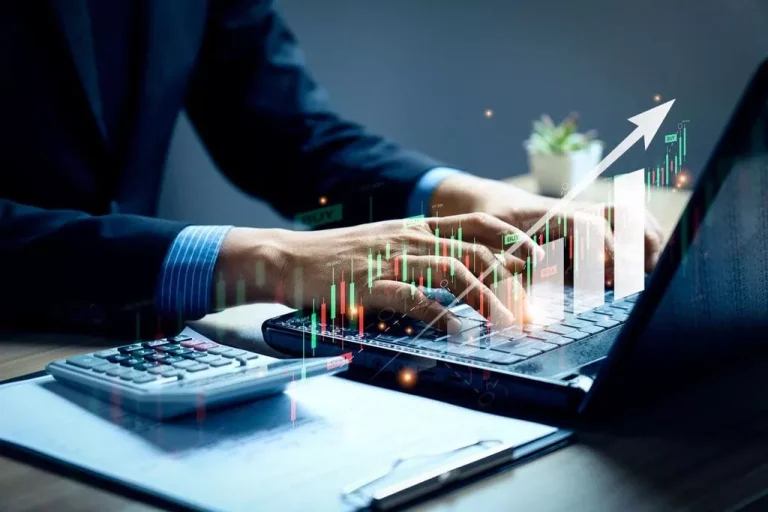It was found that traditional architecture could not scale up to the needs and demands of Automated trading with DMA. The latency between the origin of the event to the order generation went beyond the dimension of human control and entered the realms of milliseconds and microseconds. Order management also needs to be more robust and capable of handling many more orders per second.
A greater number of interested parties can have access to information required to follow a firm’s performance. On the other hand, because there is much more data, there is greater importance for firms to elucidate their strategic position with respect to competitors in their industry and market (Wernerfelt, 1984; Barney, 1991). There is a need for firm-wide information systems which allow managerial knowledge to be shared at a low cost.
Mean reversion strategy is based on the concept that the high and low prices of an asset are a temporary phenomenon that revert to their mean value (average value) periodically. Identifying and defining a price range and implementing an algorithm based on it allows trades to be placed automatically when the price of an asset breaks in and out of its defined range. There is a lot of educational material out there that makes algo trading suitable for beginners. However, we wouldn’t recommend jumping right into algo trading for real money.
Algorithmic trading is automated and does not involve the human element of emotion. It is therefore highly desirable for today’s traders because it has been proven to work over the years. For accounting systems to recapture their former relevance, they should provide information that is primarily pertinent to the shareholder owners (Jensen https://www.xcritical.in/ and Meckling, 1976). Additionally, they should capture and provide information pertinent to all relevant stakeholders included within the umbrella of stakeholder theory (Freeman, 1984; Mitchell et al., 1997). With the development of technologies such as the internet, information has become both more accessible and more varied.
An estimated 84 percent of enterprises believe those without an analytics strategy run the risk of losing a competitive edge in the market. Financial services, in particular, have widely adopted big data analytics to inform better investment decisions with consistent returns. In conjunction with big data, algorithmic trading uses vast historical data with complex mathematical models to maximize portfolio returns. The continued adoption of big data will inevitably transform the landscape of financial services.
However, the practice of algorithmic trading is not that simple to maintain and execute. Remember, if one investor can place an algo-generated trade, so can other market participants. In the above example, what happens if a buy trade is executed but the sell trade does not because the sell prices change by the time the order hits the market? The trader will be left with an open position making the arbitrage strategy worthless. Volume-weighted average price strategy breaks up a large order and releases dynamically determined smaller chunks of the order to the market using stock-specific historical volume profiles. Using these two simple instructions, a computer program will automatically monitor the stock price (and the moving average indicators) and place the buy and sell orders when the defined conditions are met.
AvaTrade is an online trading trading platform that focuses primarily on forex but supports other financial instruments, including commodities, stocks, ETFs, and even crypto assets. AvaTrade is a particularly good option for beginner traders thanks to a wide range of educational material, ranging from helpful videos to in-depth guides. Algorithmic trading (also called automated trading, black-box trading, or algo-trading) uses a computer program that follows a defined set of instructions (an algorithm) to place a trade. The trade, in theory, can generate profits at a speed and frequency that is impossible for a human trader.
Other disaggregated levels representing data characteristics such as the type of data or the level of recorded detail (business segment, plant, etc.) can also be included. This linked model provides a mechanism for gathering information with interoperability across the value chain. Additionally, this approach provides standardization of both financial and non-financial measures. The AICPA’s (AICPA Assurance Services Executive Committee, 2015) Audit Data Standard (ADS2) may also be integrated with the taxonomy. This could allow for the modernization of assurance, where applications from many vendors (Dai, 2017) could be used for audit purposes.
Unstructured data is information that is unorganized and does not fall into a pre-determined model. This includes data gathered from social media sources, which help institutions gather information on customer needs. Structured data consists of information already managed by the organization in relational databases and spreadsheets. As a result, the various forms of data must be actively managed in order to inform better business decisions. By 2016, there were an estimated 18.9 billion network connections, with roughly 2.5 connects per person on Earth.

The aim is to execute the order close to the volume-weighted average price (VWAP). Algorithmic trading, also known as automated trading or black-box trading, is the use of computer programs to execute trades on behalf of traders. Algorithmic trading programs are based on pre-defined rules and instructions, which can be based on technical analysis, fundamental analysis, or a combination of both. OANDA is a popular online trading platform that offers a variety of features and tools for algorithmic trading.

The trader no longer needs to monitor live prices and graphs or put in the orders manually. The algorithmic trading system does this automatically by correctly identifying the trading opportunity. In the ever-evolving world of stock markets and finance, the application of artificial intelligence (AI) concepts has ushered in a new trading era. Algorithmic big data in trading Trading, with its roots deeply embedded in the realm of AI, stands as a testament to the transformative power of technology in finance. The concept of Algorithmic Trading is a revolution orchestrated not by the frantic shouts of traders on a bustling exchange floor but by the digital symphony of algorithms and artificial intelligence.
- In previous days investment researches were done on day-to-day basis information and patterns.
- Because it is highly efficient in processing high volumes of data, C++ is a popular programming choice among algorithmic traders.
- They can detect subtle correlations between seemingly unrelated events and uncover hidden opportunities.
- Algorithmic trading has become synonymous with big data due to the growing capabilities of computers.
By analyzing a wide array of data sources, including news sentiment, economic indicators, and market volatility, traders can adjust their risk exposure dynamically. This adaptability minimizes the potential for significant losses and maximizes returns. However, with the massive number of algorithmic trading platforms available today, it can be challenging to decide which might be the best for you.
Within the mathematical models, algorithmic trading provides trades executed at the best possible prices and timely trade placement and reduces manual errors due to behavioral factors. Potential Impact of Quantum Computing on Algorithmic Trading Strategies The emergence of quantum computing holds immense potential for revolutionizing algorithmic trading strategies. Quantum algorithms can process massive datasets and solve complex mathematical problems exponentially faster than classical computers. Traders can leverage quantum computing to optimize portfolio management, explore intricate trading strategies, and simulate market scenarios in real-time.

